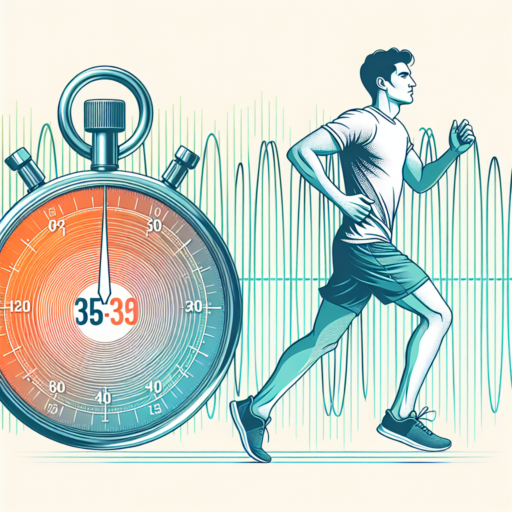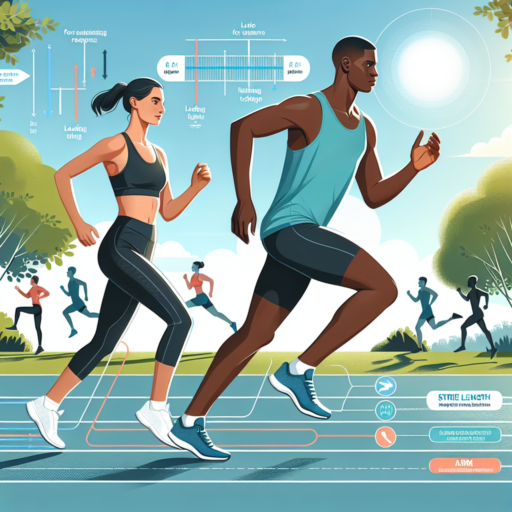Understanding the Importance of Running Cadence
Running cadence, often measured in steps per minute (SPM), is a key factor that can significantly impact a runner’s efficiency and performance. Many athletes and coaches emphasize the importance of optimizing cadence as a method to improve running economy and reduce the risk of injury. By understanding and adjusting your running cadence, you can take a significant step towards achieving your running goals more effectively.
Why Running Cadence Matters
Optimal running cadence can vary between individuals, but it is commonly suggested that aiming for a rate around 170-180 SPM can benefit most runners. This range is believed to promote a more efficient running form, encourage better propulsion, and minimize ground contact time. As a result, runners may experience less energy expenditure for the same pace, which can be especially beneficial during longer runs or races.
Moreover, adjusting your running cadence can also play a crucial role in injury prevention. A higher cadence typically encourages shorter, lighter steps, reducing the impact forces transmitted through the body with each footfall. This reduction in impact can help in lowering the risk of common running injuries such as shin splints, IT band syndrome, and stress fractures, leading to more consistent training and improvement.
- Increased running efficiency at a higher cadence
- Reduced risk of common running injuries with optimal SPM
- Improved performance through energy conservation
No se han encontrado productos.
What Is an Optimal Running Cadence and How to Measure Yours
Running cadence, often defined as the number of steps a runner takes per minute (SPM), is a crucial factor in improving running efficiency and minimizing injury risks. An optimal running cadence can vary significantly among runners, yet research suggests that aiming for a certain range may benefit most individuals. The ideal cadence is often cited as around 170 to 180 steps per minute for experienced runners. This cadence is believed to promote a more efficient running form, reduce the impact on the legs, and improve overall running economy.
To measure your running cadence, a simple method is to count the number of steps you take with one foot over a minute and then double that number to get the total steps per minute. Advanced runners often utilize wearable technology, such as running watches and foot pods, which can provide real-time cadence data and insights. These devices help runners adjust their stride on the go and can be invaluable tools in targeting and maintaining an optimal cadence.
Understanding and adjusting your running cadence can lead to significant improvements in your running performance. It’s important to note that making sudden changes to your cadence can result in discomfort or injury. Therefore, if your current cadence is far from the optimal range, gradually increasing your steps per minute by 5-10% each week until you find a comfortable cadence is recommended. Experimentation and patience are key, as the optimal cadence can also depend on individual factors such as height, leg length, and overall running experience.
5 Proven Strategies to Increase Your Running Cadence
Running cadence, often defined as the number of steps you take per minute, is a critical factor in improving running efficiency and reducing the risk of injuries. Optimizing your cadence can help you run faster and more effectively. Here, we highlight five proven strategies that can aid runners in increasing their running cadence.
Track and Analyze Your Current Cadence
Before making any changes, it’s essential to understand your baseline. Use a running watch or a smartphone app to measure your current cadence during different runs. This initial step will help you set realistic goals for improvement.
Incorporate Cadence Drills into Your Training Routine
Cadence drills, such as high knees, butt kicks, and skipping, can improve your leg turnover. Integrating these exercises into your routine a few times a week can increase your muscle memory and ultimately enhance your running cadence.
Run to the Beat
Listening to music with a faster tempo can subconsciously encourage you to match your step rate to the beat. Creating a playlist with songs that have a beats per minute (BPM) slightly higher than your current cadence can be a fun and effective way to increase it.
Developing a more efficient running stride through increased cadence can lead to improved running performance and decreased injury risk. By consistently applying these strategies, runners can see significant improvements in their cadence over time.
The Role of Running Cadence in Reducing Injury Risk
Understanding the role of running cadence in reducing injury risks is pivotal for runners of all levels. Running cadence, often measured in steps per minute, is not just about improving performance but also about minimizing the potential for harm. Research has highlighted that an optimal cadence can significantly affect the mechanical load on the lower limb muscles and joints, thereby influencing injury risks.
Adjusting your running cadence can lead to substantial benefits in terms of injury prevention. A higher cadence, which typically involves taking shorter, more frequent steps, has been associated with reduced stress on the knees and hips. This is because it can lead to a decrease in stride length and, consequently, a lowering of the impact forces that travel through the body with each step. By actively working on increasing their cadence to optimal levels, runners can engage in a more proactive approach to avoiding common running-related injuries.
Moreover, the emphasis on running cadence as part of a holistic training regimen should not be overlooked. Incorporating cadence drills and paying attention to form can aid in developing a more efficient running technique. This not only assists in injury prevention but also enhances overall running economy. It is recommended for runners to seek guidance on their individual optimal cadence and gradually adjust their running patterns under professional supervision to avoid overcompensation and potential new injuries.
How Music and Metronomes Can Help Improve Your Running Cadence
Improving your running cadence can significantly impact your performance and reduce the risk of injury. Recent studies have shown that both music and metronomes are effective tools in helping runners achieve a more optimal cadence. This innovative approach to training involves leveraging the power of rhythm and beats to synchronize your stride, making every run more efficient.
Benefits of Music in Running Caditude
Music has a profound effect on our mood and energy levels, but its influence does not end there. By carefully selecting tracks with a specific beats per minute (BPM), runners can use music to guide their stride rate. This not only helps in maintaining a constant pace but also makes the running experience more enjoyable. The key is choosing songs with BPMs that match your desired cadence, thereby fostering an environment where maintaining rhythm becomes second nature.
Using Metronomes for Precision
For runners looking for a more precise method to control their cadence, metronomes offer a straightforward solution. Unlike music, which can vary in beat strength and tempo, a metronome provides a consistent and unchanging beep to follow. This consistency is crucial for runners aiming to fine-tune their stride frequency. With a range of apps available, it’s easier than ever to integrate this tool into your training sessions. Adjusting the metronome to your target cadence allows for a focused approach to enhancing your running efficiency.
- Identify your current cadence by counting your steps over a minute of running.
- Select music playlists with songs that have a BPM matching your targeted cadence.
- Start with short intervals, focusing on matching your steps to the beat, gradually increasing the duration as your comfort with the cadence grows.
Exercises and Drills to Enhance Your Running Efficiency
Improving your running efficiency is vital for both seasoned runners and beginners alike. Incorporating specific exercises and drills into your training can significantly enhance your running form, speed, and endurance. Below, we explore some of the most effective techniques designed to optimize your running performance.
1. High Knees
High knees are a dynamic drill that focus on improving your knee lift and increasing the flexibility of your hip flexors, which is crucial for efficient running. To perform high knees, run in place or forward with an emphasis on lifting your knees as high as possible with each step. Ensure each knee is raised to at least waist height for maximum benefit. This exercise not only warms up your muscles but also teaches proper foot landing, which is critical for speed and efficiency.
2. Butt Kicks
Butt kicks concentrate on enhancing the flexibility and range of motion in your quadriceps and hamstrings, which are key muscles used in running. By performing butt kicks, where you literally kick your buttocks with your heels with each step, you encourage your hamstrings to be more engaged during your run. This drill also helps improve your running cadence (steps per minute), a crucial component for running efficiently.
3. Strides
Strides are short, controlled bursts of running, typically over a distance of 60-100 meters, focusing on increasing your stride length and speed. By incorporating strides into your workout, you teach your body to run at a faster pace without significant fatigue, training your muscles and cardiovascular system to be more efficient during your regular runs. Strides are an essential drill for those looking to improve their pace and efficiency simultaneously.
Tracking Progress: Tools and Apps for Monitoring Running Cadence
Monitoring running cadence is essential for runners looking to improve their performance, reduce the risk of injury, and enhance their overall running efficiency. To effectively track progress, a wide range of tools and apps have been developed, catering to the needs of both amateur runners and seasoned athletes. Understanding the optimal cadence can help in achieving a smoother, more natural run, which in turn can lead to better results.
Among the plethora of options available, certain apps stand out due to their user-friendly interface, accuracy, and comprehensive features. These apps not only measure your cadence in real-time but also provide insights into your running form, helping you make necessary adjustments. Features such as audio feedback, personalized coaching tips, and integration with other fitness trackers make these tools invaluable for anyone serious about their running regimen.
Popular Running Cadence Apps
- RunKeeper – Known for its versatility, offering detailed statistics on your runs, including pace, distance, and cadence.
- Strava – Not only tracks your runs but also allows you to compare your performance with friends and the wider Strava running community.
- Garmin Connect – Ideal for those who use Garmin devices, enabling seamless synchronization for a comprehensive overview of your cadence over time.
Utilizing these tools can dramatically change how one approaches running cadence. From setting goals to tracking day-to-day progress, the detailed feedback provided helps in meticulously refining one’s technique. Whether you’re preparing for a marathon or simply looking to improve your casual jogs, integrating a cadence monitoring tool into your training plan is a step in the right direction.
Real-Life Success Stories: How Improving Cadence Transformed My Running
The journey to becoming a better runner often involves myriad techniques, with improving cadence frequently highlighted as a pivotal strategy. An array of real-life success stories illustrates how focusing on cadence not only enhances running efficiency but also significantly reduces the risk of injury. By maintaining a consistent step rate, runners have found remarkable improvements in their performance, emphasizing the transformative power of cadence adjustments.
Understanding the significance of cadence has been a game-changer for many athletes. Through rigorous dedication to maintaining a higher step frequency, runners have reported a noticeable uptick in their endurance and speed. This increase in efficiency often translates to more enjoyable running experiences and a boost in overall athletic performance. The stories of individuals who have honed their cadence highlight the importance of this often-overlooked element in any runner’s training regimen.
Moreover, integrating technology to monitor and adjust running cadence has further propelled athletes toward their goals. Devices like smartwatches and mobile apps have made it easier than ever to track and refine cadence in real-time. Runners have leveraged these tools to set precise targets, monitor progress, and make necessary adjustments on the fly, leading to breakthroughs in their running careers. The integration of technology accentuates how modern runners are finding innovative ways to elevate their running cadence and, by extension, their overall performance.
Addressing Common Questions and Myths About Running Cadence
Running cadence, often measured as the number of steps a runner takes per minute, remains a topic surrounded by various myths and queries from runners worldwide. It’s crucial to sift through the misinformation to enhance one’s running efficiency and injury prevention strategies. This segment aims to address some of the most common questions and debunk persistent myths regarding running cadence.
Is a Higher Cadence Always Better?
One prevailing myth is that a higher cadence is inherently better for all runners. While studies suggest that an increased cadence can reduce the risk of injury and improve running efficiency for many individuals, it’s not a one-size-fits-all solution. Individual body mechanics, running style, and the runner’s physical condition play significant roles in determining the ideal cadence. Adjusting too quickly or aiming for an unrealistic target can lead to performance issues or injury.
Does Running Cadence Affect Speed?
Another common question is the relationship between running cadence and speed. It’s a widespread belief that simply increasing one’s steps per minute can lead to faster running times. However, the correlation is not as straightforward. Cadence is merely one element of speed, alongside stride length and efficiency. Finding the right balance rather than focusing solely on step frequency can lead to significant improvements in both pace and endurance.
- Myth: A universal cadence target applies to all runners.
- Truth: Ideal cadence varies widely among individual runners.
- Myth: Changing your cadence is unnecessary if you’re not a professional runner.
- Truth: Adjustments can benefit runners at all levels by improving efficiency and reducing the risk of injury.




